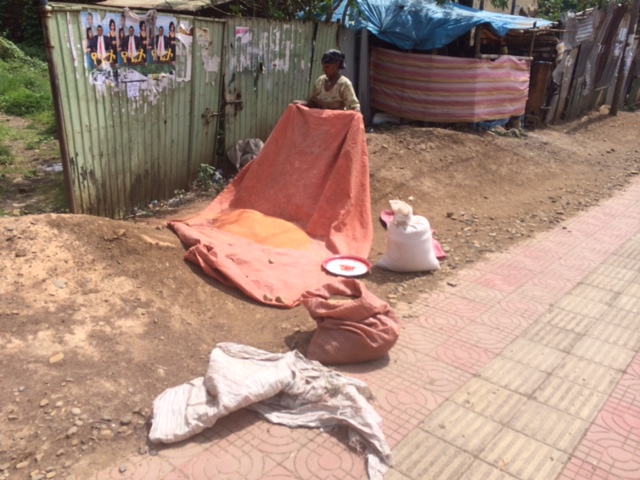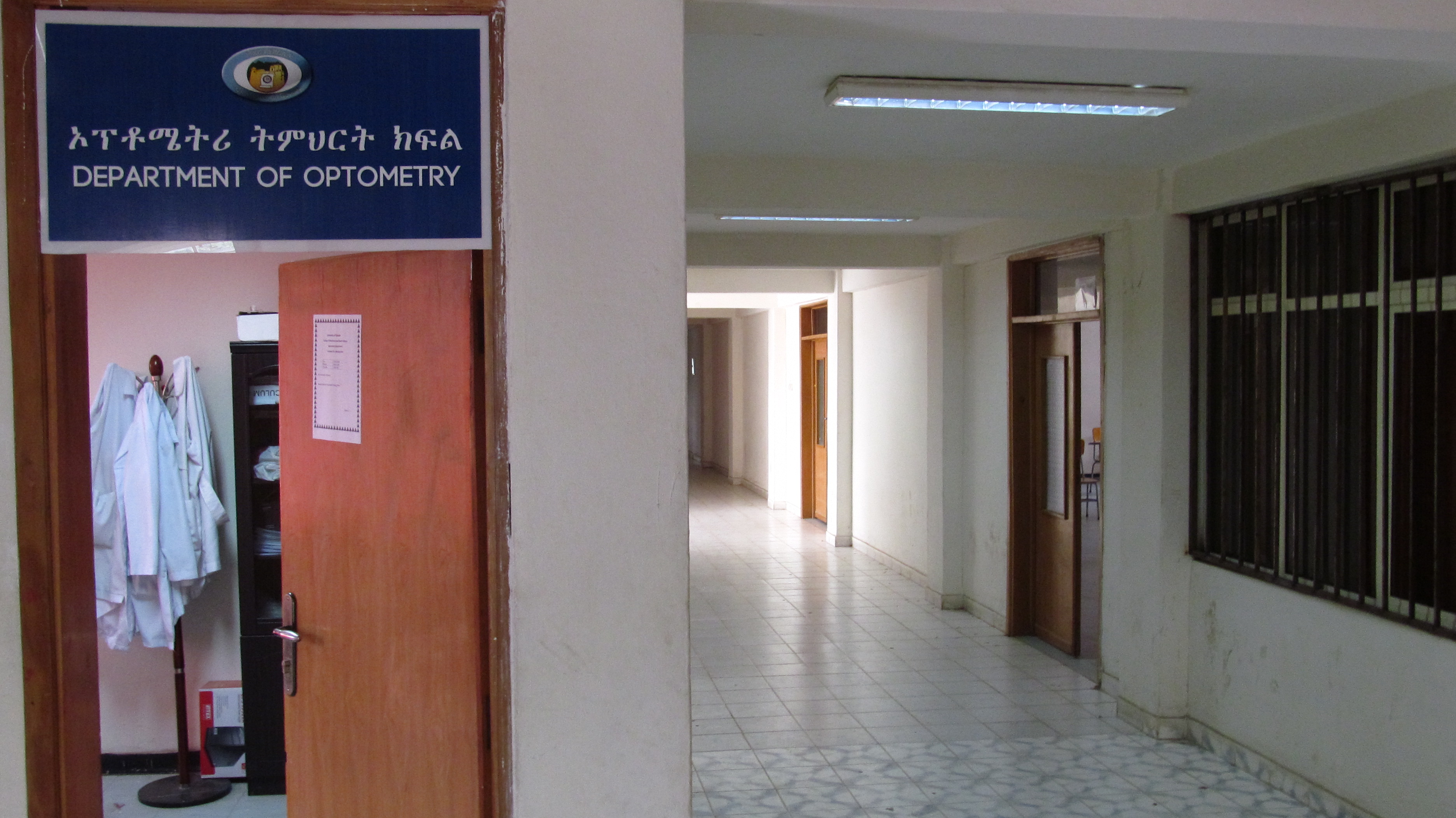By Jeff Walline, Associate Professor
Ohio State College of Optometry
In Ethiopia, optometry is a bachelor’s degree, but I am here to teach six motivated students obtaining Master’s degrees in optometry. One purpose of their education is to expose them to optometry procedures that are practiced in the United States that are typically not practiced by optometrists in other parts of the world. Therefore, I teach them things that they cannot practice due to economic, social, and/or technologic constraints. However, the students are very interested in learning. Hopefully, they will also be able to practice these procedures in Ethiopia and teach future optometrists to practice them as well.
Below is a picture of patients waiting to have their eyes examined in the Vision Clinic. They wait in the courtyard of a three story building that appears old and decrepit in some areas and never completely finished in other areas.
Ethiopian people are very patient, and waiting seems to be a natural part of their lives. They wait for eye examinations, they wait for cabs, they wait for something that never seems to appear. However, they never complain about waiting. It just seems to be a part of their lives.
What I teach optometry students in two semesters, I have squeezed into one week. I don’t know how much of it actually “sunk in,” but I know that the students will certainly have more information than when I arrived. They are anxious for a final, but I didn’t know that I was to give one. I will prepare a final when I return and send it to them, but first I will prepare them for the final on my last day here.
I want them to have a positive feeling about their experience, and I think a strong performance on the final would help to solidify that feeling.
I have one more day to lecture. On Monday, I thought this day would never arrive. Now that it has, I look forward to going home but not with as much fervor as before. The people of Ethiopia are very kind and I will miss them.










